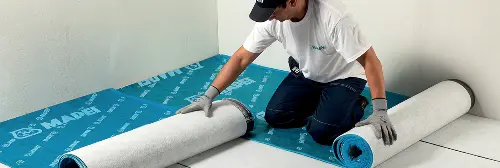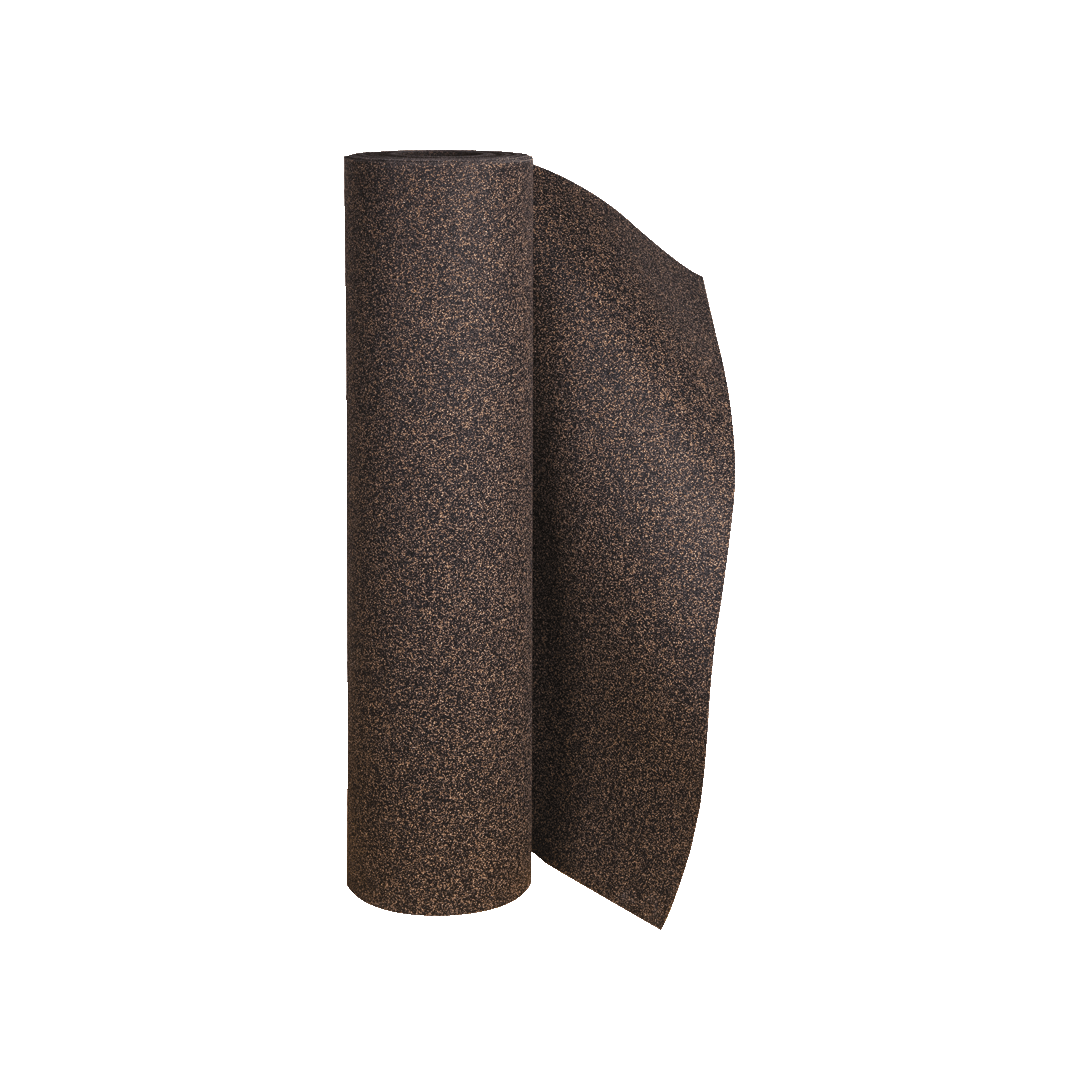
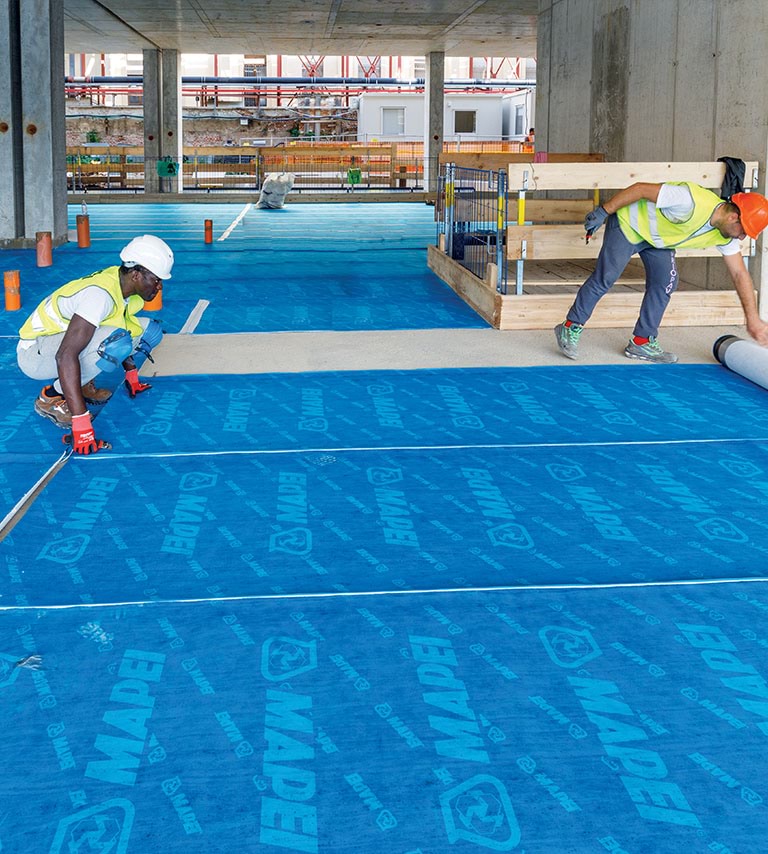
The expert's opinion
/
2/14/2024
Soundproofing with sustainable systems
A new challenge for designers, an opportunity to improve quality of life while safeguarding the environment
Thanks to our commitment to innovation and Research & Development, Mapei is today in a position to offer effective solutions compliant with these regulations that enable adequate soundproofing to be guaranteed in such surroundings, thereby contributing to wellbeing inside various types of buildings.
How much do we know about acoustic comfort?
Urban development and an increase in the density of housing in our cities have increased possible sources of acoustic disturbance inside buildings, leading year on year to a growing need in the modern building sector: acoustic wellbeing. In many countries, the fundamental principles regarding passive acoustic requirements for buildings and safeguarding the environment against acoustic pollution are governed by laws and regulations. Thanks to our commitment to innovation and Research & Development, Mapei is today in a position to offer effective solutions compliant with these regulations that enable adequate soundproofing to be guaranteed in such surroundings, thereby contributing to wellbeing inside various types of buildings.
Is it possible to combine acoustic wellbeing and environmental sustainability?
Acoustic wellbeing and sustainability are both concepts that have now become part of the primary requirements for modern buildings. This is why today’s soundproofing sector is now able to offer cutting-edge solutions from a performance perspective and with ever increasing attention on mitigating their impact on the environment.
Soundproofing sector is now able to offer cutting-edge solutions from a performance perspective and with ever increasing attention on mitigating their impact on the environment.
What solutions does Mapei propose to counteract noise in buildings?
With thirty years’ experience in the sector, the Mapei portfolio includes a range of complete systems for soundproofing floors against impact noise that may be employed in both new buildings and in existing buildings undergoing renovation work. The MAPESILENT system by Mapei is ideal for new builds for creating high performance, soundproofing floating screeds in the highest acoustic efficiency classes.
For existing buildings undergoing renovation, where work will be carried out without removing the old flooring, we recommend using MAPESONIC CR, a compact uncoupling and anti-fracture soundproofing membrane, ideal if you want to considerably improve the level of acoustic wellbeing without affecting the height of the floor, and which may be used for installing bonded, floating and removable flooring, as well as together with heating systems with low thermal inertia.
All Mapei systems can be completed with a full range of complementary products such as perimeter strips, adhesive bands and tapes, products which are essential to guarantee maximum performance against airborne and impact noise.
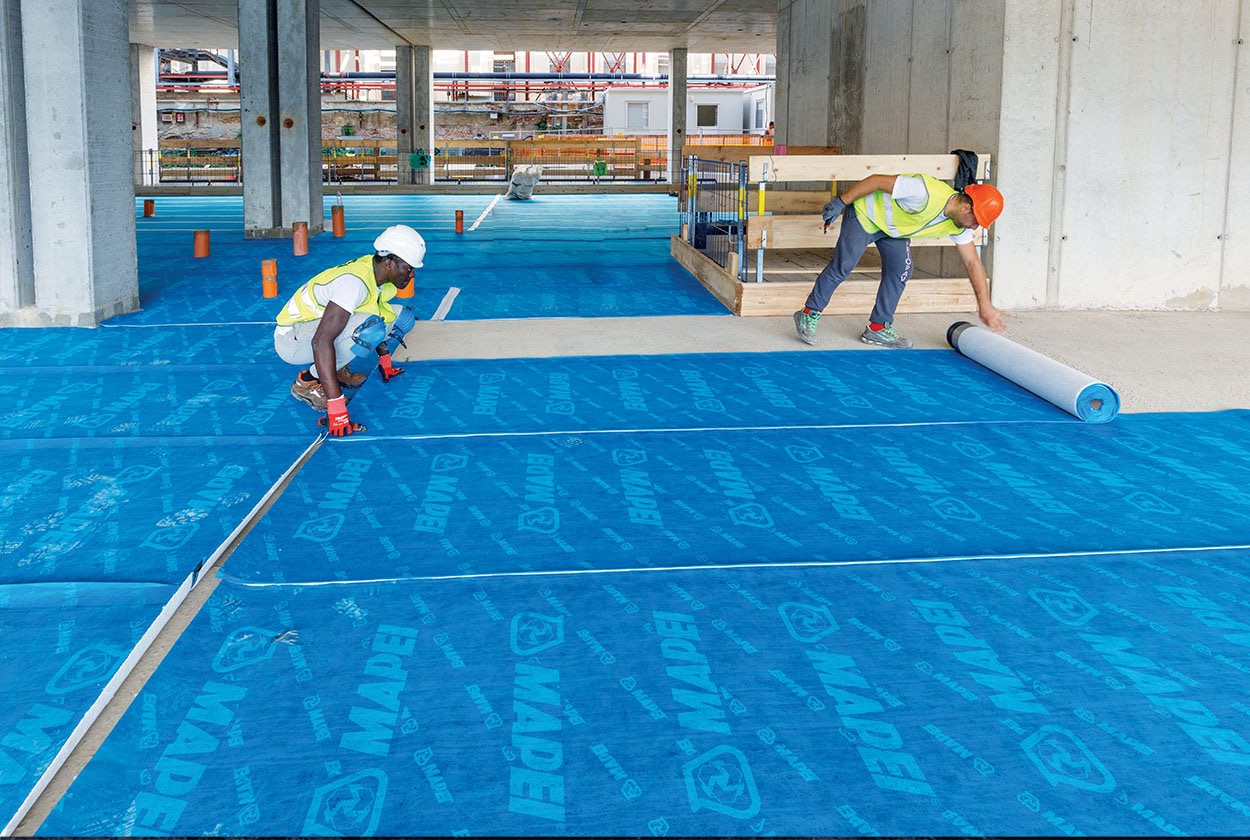
Applying MAPESILENT ROLL in a healthcare facility in Milan (Italy).
How do Mapei soundproofing products contribute to reducing environmental impact?
Mapei is committed to safeguarding the environment, using energy and resources sustainably, reducing waste materials, increasing recyclability of materials, developing products that are safe for installers and users and that guarantee that areas and rooms where they are applied are as healthy as possible.
The concrete improvements we achieve regarding sustainability are documented and communicated at regular intervals.
Which certificates attest this characteristic?
All soundproofing products by Mapei comply with sustainability criteria of the most important environmental protocols and are certified according to the main international standards, amongst which we have LEED (Leadership in Energy and Environmental Design).
LEED is the most widely adopted international certification system when it comes to the environmental sustainability of buildings. It is adopted in more than 100 countries around the world and is based on a system of credits assigned to the design, construction and management of a structure.
As far as indoor air quality is concerned, all products from the Mapei soundproofing line are certified EMICODE EC1PLUS by the German association GEV, which attests their low emissions of volatile organic compounds (VOC), all to the benefit of installers and end users.
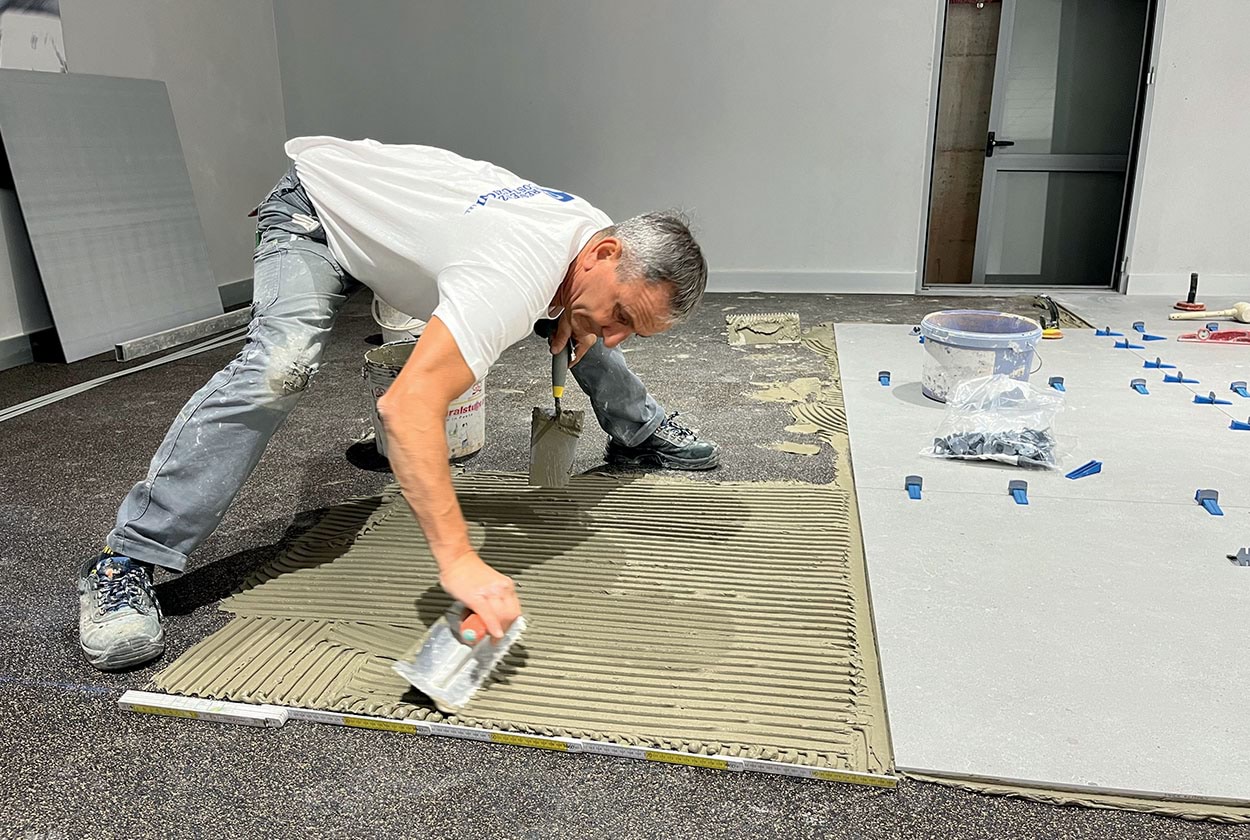
Applying MAPESONIC CR in a commercial facility in Southern Italy
Can Mapei soundproofing systems be used in combination with other sustainable products?
Absolutely, and this is one of the things that makes our portfolio so unique. The ability to offer the best and most innovative solutions to design and construct sustainably is a fundamental commitment for the Group. It requires a sense of responsibility and the ability to make concrete choices in order to supply designers, contractors, workers and clients with products that are safe, reliable and durable over the years and which have the lowest impact possible on the environment.
Our soundproofing products integrate perfectly with our flooring systems and include pre-blended mortars for screeds, skim coats and self-levelling mortars, adhesives, grouts and sealants. Apart from offering excellent performance characteristics, all these products play a part in reducing environmental impact thanks to their high content of recycled material, very low VOC emissions, their specific formulation which reduces CO2 emissions during the production phase and CO2 emissions that are fully offset throughout their entire life cycle through the acquisition of certified environmental credits in favour of renewable energy projects.
What other support do you provide for designers?
Apart from the usual support from our team of highly specialised experts, that we guarantee to all our clients during the various phases of construction work, Mapei also has Data Mapesilent available in English for professionals at https://www.mapei.com/it/en/tools-and-downloads/professional-software#data-mapesilent
This is a software program used to verify the acoustic characteristics of buildings and calculate the thermal transmittance of partition walls. The program also allows you to verify if project requirements meet the specified legal limits. It includes a comprehensive database of materials and components, and their relative performance characteristics taken from reports published by research institutes.
The procedures used to calculate passive acoustic requirements are taken from the European standard EN ISO 12354.






